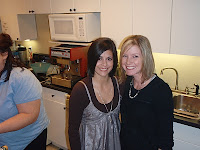As a part of gut health, cultured dairy products have a huge role to play. They will also play a prominent role in Phase 2 Good Fats/Bad Fats, so this is a transitional "Extra Step". I have already covered some of the benefits of cultured milk products. I would like to you to try one or more of these yourself. It is a good way to incorporate raw milk into your life.
I confess, I might be at my time limit for cultured products, but really, I think I need to just add a block of time mid-week to rotate half of my cultures, then use my regular Saturday morning to rotate the other half. This way, I can have cultured, raw milk products on hand for snacks and meals. Thankfully, my counter is big. Also, I am trying to go with very simple and wholesome meals to help with time management.
I am finding our nutrient dense meals to be very satisfying, if quite simple. A soup, made with bone broth, a little meat and some soaked grains... some sourdough whole grain bread with raw butter.... a green salad with oil and vinegar dressing (I have been adding sauerkraut juice to this - it isn't bad). Simple, filling, easy to prepare and clean up. What more could you want for a dinner?
Anyway... on to the cultured milks. Before refrigeration joined us in our industrialized lives it was a lot more common to culture milk before consuming. Consuming large amounts of uncultured milk was rare. Yogurt, cheese, clabber, curds and whey were used to effectively prevent milk from spoiling. Through the process of lacto fermentation, friendly bacteria breaks down both milk sugars (lactose) and milk protein (casein). This process effectively inactivates the spoiling bacteria and allows your milk product to be preserved for days, weeks... or in the case of cheese, years.
The process of lacto-fermentation also predigests these milk products and allows the nutrients to be easily absorbed by your body with less energy. Also, these live, culture dense foods help colonize good bacteria in your gut. Although I have listed yogurt in Phase One as a simple and easy way to begin, there is an amazing variety of cultured milk.
If you are able to study the homogenization and pasteurization process, it might help you understand the benefits and drawback yourself. I have listed a couple of pages from raw-milk-facts.com for you to look over.
Raw Milk Basic Facts
raw-milk-facts.com - homogenization
raw-milk-facts.com = pasteurization
*note: When dealing with live bacteria, keep in mind that some good bacteria may have names that sound like bad bacteria.
Streptococcus, for instance, can be a beneficial bacterium, although most people think of strep throat when they hear the word.
Streptococcus refers only to the shape of the bacterium, and has nothing to do with its ability to promote health or cause disease. (Strept means 'twisted" and coccus means "round.")
Streptococcus thermophilus has been safely used for centuries to make cultured dairy products such as yogurt, and cheeses such as Mozzarella.
Some of the various types of cultured milk are:
Yogurt - which is made by first heating milk and then adding a culture... then allowing the culture to develop.
Kefir = a slightly effervescent beverage made from milk. My friend Jamie is going to buy some Kefir grains from the GEMS website and give it a try. She agreed to take pictures and let us know how it is going and what she learns. I am looking forward to that.
Creme Fraiche - a cultured cream product - you can also use it to make a cultured raw butter. It is apparently wonderful in soups and sauces. I have not tried this product myself, but plan to soon.
Cultured raw butter needs no salt and has a high enzyme content which makes it really easy to digest and a flavor that is amazing.
Cream cheese and cottage cheese are traditionally made by allowing the fermentation process to continue for several days until the curds (the casein containing part of the milk) separates from the whey.
Further inoculation and fermentation turns the cream cheese into cheese.
Whey is a valuable activator used in other fermented foods and beverages.
I will list recipes for each of these milk products separately. This way, they are easier to find. I hope some of you will find the time and energy to acquire some raw milk and try some of these. If you can't do raw, try the unhomogenized. If you can't do that, try organic. Take baby steps and do what you can. Try one new thing. Find a recipe and make it a family project. Most of these are quite easy..... just requires some time and attention.
I am enjoying the "slow foods" movement, where foods are thought out 2-3 or more days in advance. Although there is nothing "instant" about these foods, if you have a wide variety of them on hand, they are wonderful, live and right there in your fridge for your use. To be frank, I find that the actual preparation on a day to day basis requires a lot less time. It is a process.
Best of Health
Cindy












